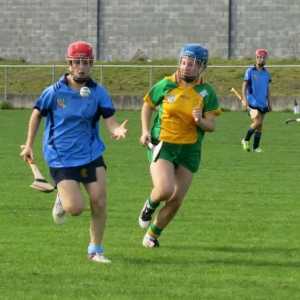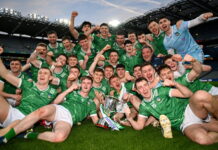
However, she feels that she is swimming against the tide when it comes to the general public’s interest in camogie compared to its’ male equivalent hurling.
In recent months she has often been left frustrated with her attempts, and those of her team-mates with Truagh/Clonlara camogie, to boost the public profile of camogie.
Emma was particularly critical of one national media organisation to whom she wrote a letter, describing the response as “very dismissive and unsatisfying”.
Speaking about the coverage of camogie in the media, she said: “If you open any of the national newspapers and go to the GAA section you will not see anything regarding camogie, only hurling or football news, and this is not right.
“It is also the same for broadcasting. If you turn on ‘The Sunday Game’ or any of the sports programmes it is all to do with hurling and nothing about camogie.”
For Emma, the problem is not exclusively a national one. Even at local level, she and her team-mates have struggled to obtain the recognition that they feel they deserve.
She pointed out that members of the camogie club are left needing to carry out extensive fundraising to continue operating as the club does not receive funding from the GAA, although the sport is governed by a separate entity, The Camogie Association.
Along with some of her team-mates, she was also left disappointed in her quest for a ticket to the hurling All-Ireland final between Clare and Cork in September.
One of the principal reasons for Emma’s dissatisfaction with camogie’s comparative lack of publicity is that girls who play the sport put in just as much as effort as hurlers of a similar level.
“From February to October, I train three times a week with the senior team, once a week with the minors and once a week with my school. I’m training five times a week for about 90 minutes each time.
“There is very little difference between camogie and hurling as a sport but there is a significant difference in the interest that people show to the hurlers than to the camogie players and I simply cannot understand it as the two games are identical. I feel that we need to speak out and voice our opinion as we show the same skill, determination and commitment as hurlers do.”
Emma gave a couple of examples of how she believes that, even within her community, camogie players are not regarded on an equal footing with hurlers.
She told of how there were banners in her locality wishing good luck to the parish’s Clare hurlers in the All-Ireland final, but nothing was erected when Truagh/Clonlara reached a county final.
She also mentioned the sparse turnout to congratulate the camogie players who won an underage county title, adding that she and her friends were told that they were not allowed into the locality’s main GAA pitch for a puck-around. Far from being deterred, however, Emma is more determined than ever to voice her belief that camogie deserves a status equal to that of male sports.
“The more it is said, the more people will take notice. I love camogie and I’ve formed a real bond with my team-mates. I’ve become really close friends with them.”
Emma has won several medals with her club at county level, but if there was a prize for an indelible love and passion for camogie, she might well be an All-Ireland champion.









